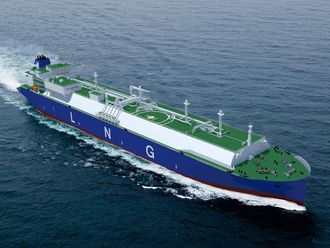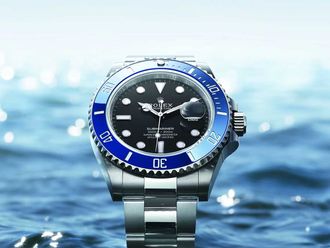Tokyo: Tensions between Japan and China have spilled over into new sparring over gas fields in disputed areas of the East China Sea, where the two governments have been negotiating a treaty to jointly develop the energy reserves.
Japan may start drilling near a gas field in disputed waters if China extends its drilling activities there, the Nikkei Business Daily reported yesterday.
Here are some questions and answers about the dispute:
What is in dispute and why does it matter?
Tokyo objects to Chinese development of the gas fields which overlap with Japan's claimed boundary in the East China Sea. China rejects that boundary claim.
The row is about the development of natural gas in a 970km trough — called Xihu by China and Okinawa by Japan — in the East China Sea running parallel to the Chinese coast some 500km southeast of Shanghai. The trough basin holds nearly 17.5 trillion cubic feet of natural gas, according to Chinese estimates, which have said the basin could hold 20 million barrels of oil.
If these numbers are accurate, the gas reserves equal around 20 per cent of China's "proved" reserves: those that can be recovered given current technology.
China National Offshore Oil Corporation (CNOOC), the Chinese company most heavily involved in the area, has identified six fields, which it calls Chunxiao, Tianwaitian, Duanqiao, Baoyunting, Canxue, and Wuyunting, that it said hold a total of about 364 billion cubic feet of gas.
The contention centres on the largest field, Chunxiao, which CNOOC estimated has 169 billion cubic feet of gas.
Gas is an important part of coal-dependent China's national ambition to use more cleaner-burning fuels in its energy mix. Japan, which has almost no domestic oil or gas reserves, also wants more to lessen its dependence upon imports.
For Japan and China, wary of each other's maritime claims and broader intentions, the dispute also carries symbolic importance.
What do they disagree about?
The dispute comes down to how each country proposes defining the maritime boundary. Each maintains that international law backs its claim.
Japan says the median line between the two countries' coasts should mark the boundary of their exclusive economic zones. China says the boundary is defined by its continental shelf, extending its zone beyond the median line.
Their overlapping claims cover nearly 210,000sq km.
China's drilling of the Chunxiao field is in an undisputed area, but Tokyo fears it could drain Japanese gas through a honeycomb of seabed rocks.
In June 2008, Beijing and Tokyo agreed in principle to solve the dispute by jointly developing the disputed gas fields.
Negotiations over a treaty aimed at joint development began in July, but China postponed the next round of talks, due in mid-September, to show its anger over the territorial friction.
Japan has accused China of drilling for gas in violation of the agreement.
How much do the disputed areas produce?
Tianwaitian began production in the first half of 2006 and in 2007 output was equivalent to a modest 4 million cubic feet per day, rising in 2008 to about 17.7 million cubic feet a day, according to CNOOC. It has not released recent numbers.
Chunxiao, located less than 5km west of the median line, will eventually link via pipeline to Tianwaitian, from where both platforms' gas will go via pipeline to an onshore terminal.
Without more exploration, there is no way of knowing exactly what the area holds.
The reserve estimates from Chinese sources cited by a United States Energy Information Administration study are more than a decade old. China has not disclosed any more recent estimates.












